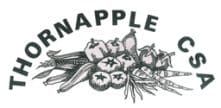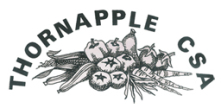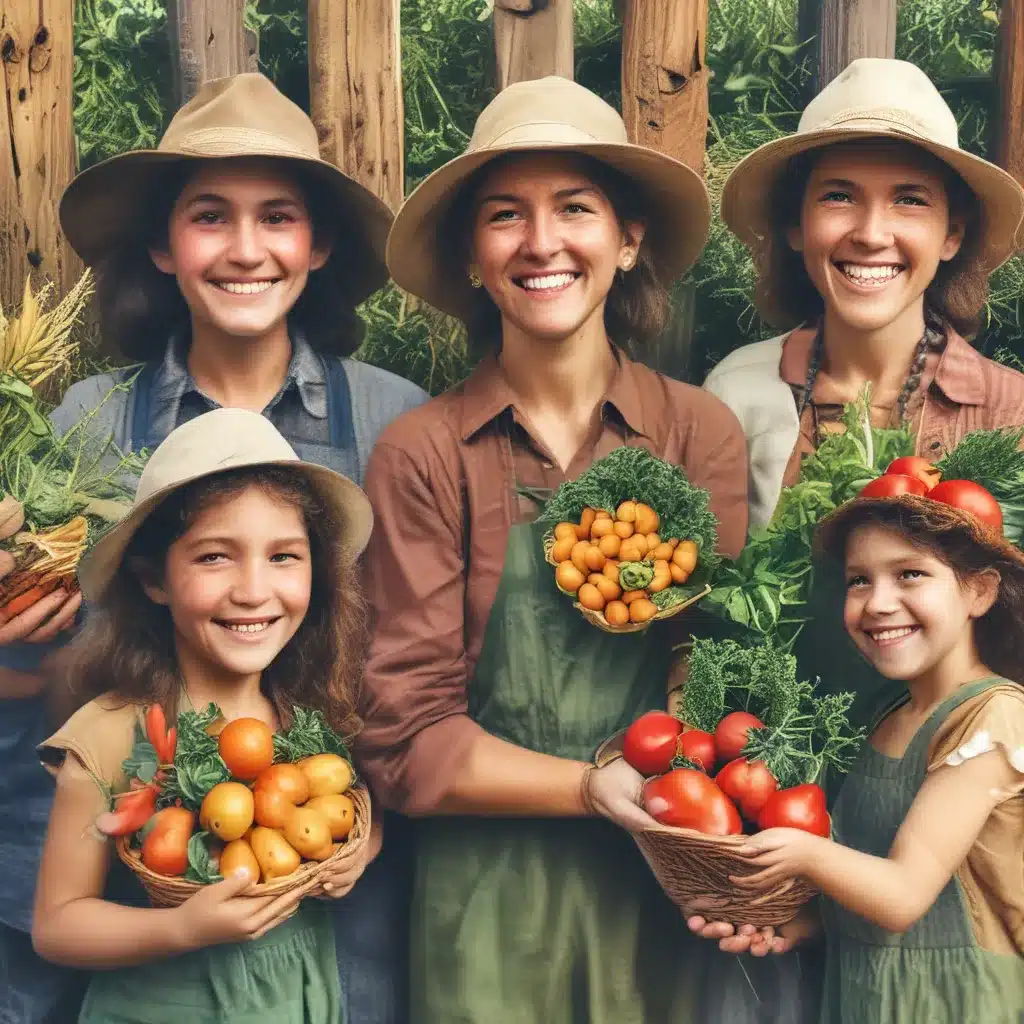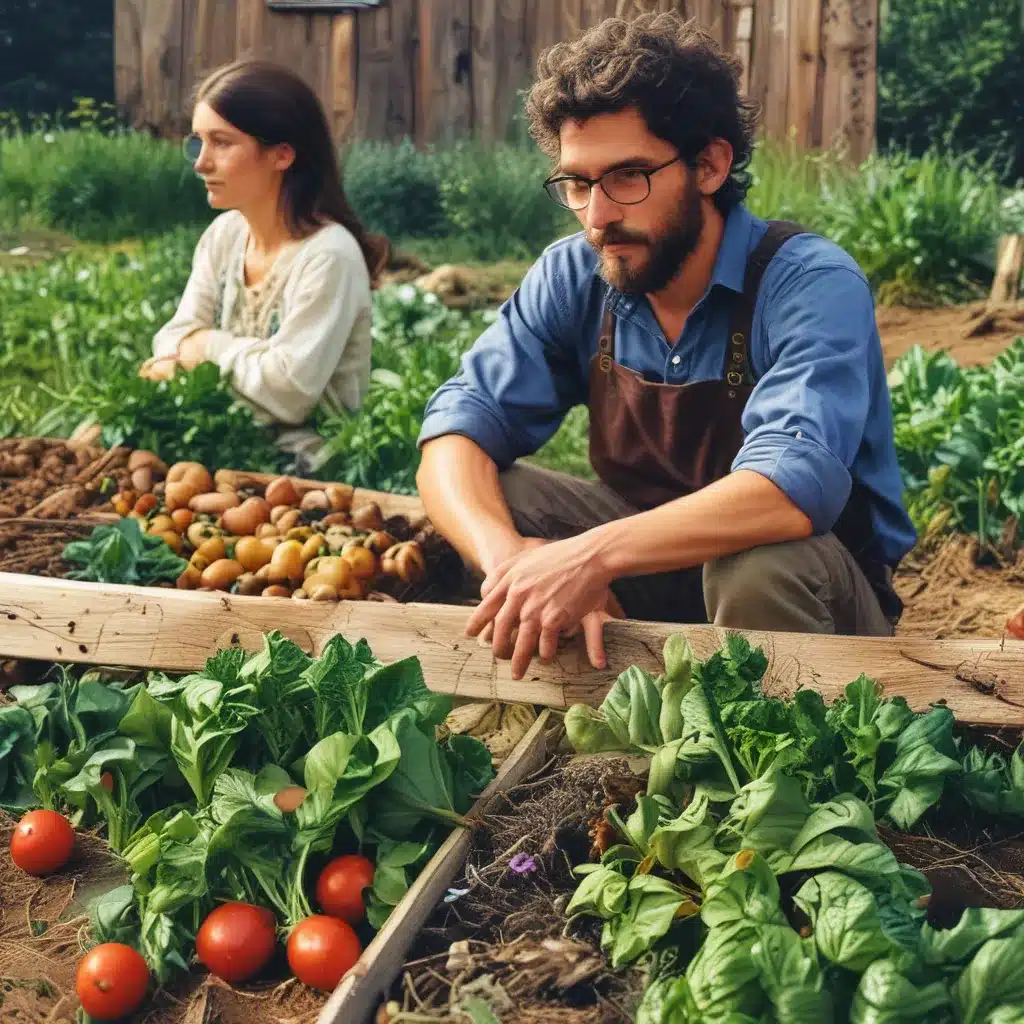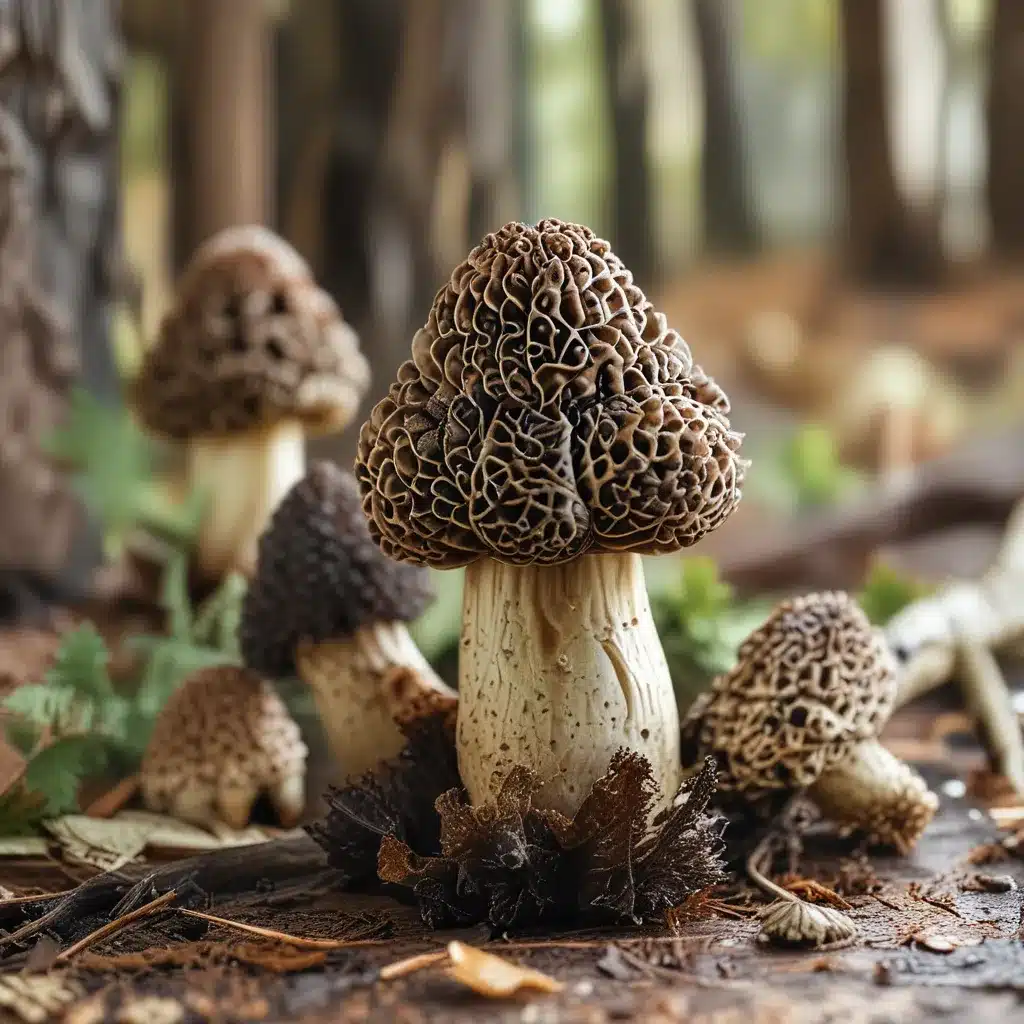
The Thrill of the Hunt
Looking to find your first wild morel mushrooms but don’t know how? Or have you been lucky enough to find a few you thought were the real thing but would like to be more confident about safely identifying and preparing them? You’re definitely not alone. And I’d like to think you’re in the right place to start learning how to find these delicious wild mushrooms—and others—all on your own. There should even be a few tips to help those of you a bit more experienced with foraging learn a new trick or two.
If you’re like a lot of enthusiastic beginners, you’ve looked in books and asked questions in mushroom ID groups online and possibly been shot down in the process. Perhaps your well-meaning comments embroiled you in the fiery “Cut vs Pull” debate and you’re still licking your wounds. If you’re inexperienced with a field guide or scientific identification keys and unsure about trusting someone online to give you advice, you may have reached out to a successful mushroom hunter or local vendor to ask “Where can I find morels around here?” or “Do morels even grow in Idaho?” Spoiler alert: Yes, morel mushrooms grow in Idaho.
Depending on your relationship or lack thereof with said hunter, their response probably ranged from a sly wink to “Over that way” with a vague arm-wave to “Well maybe I’ll take you hunting with me—sometime.” If that describes your experience, I understand how frustrating it can be, and I’d like to help you learn more so your morel hunts become more productive and enjoyable. And if you’ll consider a few sustainable practices, your foraging trips might even become a net positive for your local habitat.
The Explosion of Morel Mania
Mushroom hunting and foraging in general seems to be all the rage these days. In Idaho, beginning in April and continuing on through midsummer, it’s pretty common to find baskets of wild-harvested morel mushrooms for sale in farmers markets and natural grocery stores or served up on seasonal tasting menus in restaurants. For the growing number of those who’ve tasted these delicious wild fungi, the opportunity to purchase them right off the shelf with the weekly groceries is a hard one to pass up.
But with prices ranging from $20 to $40 per pound depending on seasonal availability, if you’re like me, you’re probably more motivated than ever to see if you can find them yourself for free. With a bit of help in the information and identification department and a sturdy pair of walking shoes, I’m sure you can.
My Morel Journey
I was lucky enough to grow up in Idaho with parents who were pretty good at finding morels and other well-known edibles like huckleberries and were also willing to share access to our super-secret “family hunting grounds” up in the mountains. Thanks, Mom and Dad! So I grew up knowing what a few basic wild edibles looked and, more importantly, tasted like. I could count on a trip or two each spring when conditions were optimal to gather enough to preserve for the following year.
Yet as I started my own young family, a two-hour drive to the mountains for a hunting trip became less of a “quick trip” and more of a “serious undertaking.” I couldn’t just take off with a buddy when I saw the weather looked right—I had to account for little legs that couldn’t walk too far, snacks and naps, and my kids required a bit of care too. Still, I wanted to be able to hunt for wild food. I just needed to be closer to home where I could dart out during a good time with the kids and be back home for naps in the afternoon.
Fortunately, about that time, I took a mushroom identification class with the Southern Idaho Mycological Association (their Facebook page is here), and they shared that morels and other edible mushrooms grew right down here in the city somewhere anyway. I’d been finding morels in the mountains for years, so at first, I thought I was set. But because I was mostly seeing cottonwood and other deciduous trees here in the valley versus the evergreen forests where I was used to finding them up high, I couldn’t begin to figure out where along the many miles of the Boise Greenbelt they could be.
So I’ve been where you’re at, and I can relate. I can tell you it took me miles and miles of walking, lots of reading and research, and several false encounters before I found my first local morel all on my own. These days when someone completely unknown to me comes up and asks where to find these delicious tidbits or insinuates they’re entitled to a guided tour of spots I’ve identified, observed, and often cleaned up over the span of ten years, perhaps you can understand if I and other hunters hesitate to reveal many details.
After all, I don’t know if you’re the kind of person who would tromp through a patch, harvesting and disturbing everything in sight—it has happened to me—or the type that strives to make as little impact as possible, maybe even cleaning up some litter along the way. Still, I love mushrooms and foraging, and I love teaching, so if you’re curious enough to ask me specifically, I do like to help educate and encourage a genuine interest where I can.
Sharing the Knowledge
I think education is one answer to resolve this conflict. I love the resources we have right here in Idaho and the Treasure Valley, and I want to make sure they’re sustained and protected. So I’ve put together this beginner-to-intermediate guide to finding morels in Idaho, which should also apply to many parts of the country. I’m hoping it will help people like you, the enthusiastic novice, get so hooked on researching and finding these treasures that you decide to learn everything you can to help protect the habitats in which they live. Not to mention building a thriving community of foragers that will help keep the knowledge alive.
And I know from personal experience that you’re not likely to stop with morels if you have some early success. There’s a world of wild food out there waiting to be rediscovered, shared, and protected. If you can show you’re patient and curious enough to do the research and persistent enough to do the legwork, then other hunters will know you’re likely to be the kind of person they want out hunting with them. Which makes it much more likely you get invited along on a guided trip—one of the best ways to learn.
With just a few tips, you can join other enthusiasts in a low-cost activity that promotes local eating, exercise, continuing education, and consideration for your community and immediate environment. And in times like these of such rapid change and uncertainty, it’s pretty nice to be able to fall back on a skill that does all that and also hasn’t changed much in a few thousand years.
Where to Look for Morels
Morels can grow in a frustratingly wide variety of environments, from sandy riverbanks populated with hardwood trees to high-elevation conifer forests where the snow banks don’t disappear until midsummer. They can fruit on cinder blocks and in mulched gardens anywhere the spore falls or is blown and finds friendly conditions. So it’s possible that the cagey mushroom hunter wasn’t trying to put you off—they really can grow almost anywhere.
However, by learning not just where they can grow but also where and when they are likely to grow, you can increase your chances of finding morels instead of just looking. As a fungus, one of a morel’s “jobs” is to break down dead plant matter. So look for hardwood forests or naturalized areas such as the edges of a city park or along Boise’s Greenbelt that have stands of mature trees and saplings, fallen branches or dying trees, and deep leaf litter off which they can feed. If you can find sandy riverbanks nearby, even better.
Common deciduous trees that I’ve found associated with morels are poplar, elm, cottonwood, ash, apple, and birch. So if you can locate large stands or stretches of these trees, you’re in a good area to begin looking. FYI, no one really seems to know if morels are saprobic (feeding on decaying matter), mycorrhizal (in a symbiotic relationship with a plant’s or tree’s root system), something else, or a combination (the most likely scenario currently), but that doesn’t matter much when it comes to finding them in the first place.
In very early spring, you may also find clusters of “landscape morels” (Morchella importuna) in areas that were heavily mulched with wood chips the prior year. In the fall, keep an eye out for city projects using chips, and you’ll have a few spots to check the next spring. These flushes seem to peter out after just one season, but you might get lucky in a subsequent year or two.
Later in the season, you’ll need to travel higher in elevation to follow spring and the subsequent flush of morels. You can begin looking in the mixed conifer forests north of Boise and Horseshoe Bend, which can be reached via Forest Service roads. In our area, Douglas fir trees with their very morel-shaped cones and older spruce are more likely to be associated with this particular fungus than are other conifers like pines. However, in other parts of the country, pine forests seem to yield plenty of Morchella. Basically, morels do what they want. Aren’t challenges fun? 😉
As any seasoned morel hunter is likely to tell you, morels grow where they like, and there are certainly exceptions to any morel-hunting “rule.” These exceptions may be caused by microclimates (e.g., a shady pine next to an underground spring in a dry year), a natural event such as a wildfire, or perhaps just the fun-loving and perverse nature of Morchella in general. Mushrooms simply need the right conditions to fruit, and they seem to be great at waiting years to do so if necessary.
I had the delight of finding this giant late-season morel in an area that, for 5 years, was too dry by early May to produce any mushrooms at all. However, everything else like tree and soil type looked right, so I kept that location in my rotation to check every so often. Sure enough, when I was forced to explore alternate hunting grounds because the Boise River had flooded my usual areas, there it was—a fun day!
Seriously, morels are usually well-camouflaged and can almost seem sneaky in their ability to hide. I find that looking at the whole endeavor like some kind of treasure hunt helps a bit on the days you get skunked. And if that little mindset shift doesn’t help, you can always try making the Bitter Forager’s Rescue—a sumac lemonade and blackberry mocktail I created for just such an occasion.
Indicators and Associations
There are all kinds of things that can look like morels when you’re desperate to find them, especially early in the season. Chewed-up pine cones, fir cones, cottonwood leaves, dog poop, shadows, holes—you’ll be surprised when you start looking. But don’t let a few false starts put you off continuing to search. As I discuss in this April Fools post, making a few mistakes thinking you’ve found a morel when you haven’t is actually a good sign you’re training your brain to notice the right things. You’ll get there.
In addition to looking in deep leaf or needle litter or in mossy regions of the forest, pay attention to areas of recently disturbed earth, such as along hiking and game trails, logging roads, campsites, and even in deep footprints. Every year, I find several morels growing inside the footprints of an elk, right alongside packed-earth trails or inside old fire-rings in a campsite. These are what some people call “natural” morels—those recurring year after year in similar patches, the type I referred to when I mentioned our family hunting grounds.
However, unusually large quantities of morels can also be found in the spring after a forest has burned in a wildfire. This “flush” or growth may continue in the area for several years, decreasing in quantity each spring. These morels are usually a different species than the so-called naturals but are still delicious. And some burn species, like Morchella tomentosa with their black velvet-covered stems, are my very favorite morel variety to eat.
Hunting a “burn” is a great way to set by a large stock of dried morels because you can often find more more quickly than you can hiking after “naturals.” You’ll likely need to clean them more than you would naturals because they’ll be growing in ash and soot, so make sure you allot enough time to eat or preserve what you pick.
My friend and fellow SIMA-member Kathy R. has this special caution for burn areas due to the fact that the commercial morel business is primarily cash-based, and many pickers and buyers carry guns: “Do not go alone if commercial pickers are in the same area. If you find an abandoned bucket of morels, go the other way and don’t be tempted, as they often find a lot and can’t carry them all. This has happened to me twice.”
Even so, hunting a burn is a great way to get your feet wet and learn to train your brain to “see” and notice these camouflage artists. There will be less foliage for them to hide under, and greater numbers mean you might be more likely to see them. And depending on the size of the wildfire and the subsequent years’ weather, the normally short season may be extended substantially. During 2020, my friends Cina and Mik were finding fresh burn morels north of McCall, Idaho, into October!
A last note: if you do hunt in burned areas, be sure to prepare for harsh, dirty conditions and check with the Forest Service in charge of that area, as sometimes free personal-use permits may be required. Being caught harvesting without a permit in this situation could mean incurring a hefty fine and having your hard-earned mushrooms confiscated. You’ll also want to check with the Forest Service to make sure you know if areas have been closed off due to remediation or for safety concerns.
Spotting Those Tricksy Morels
When you finally DO find your first morel, STOP and take a careful look around because you’re probably about to step on another one. I find it works best to scan a likely area several times, visually sweeping back and forth, because I tend to register them most often out of the corner of my eyes. When the light is shining at an angle (basically any time during the day except between 11 am and 2 pm), I also find it easier to spot them for some reason. They can be somewhat translucent, so maybe the light shines through or they cast a bigger shadow, or both.
Morels can grow as singles, but quite often, you’ll find twins or even a satisfying baker’s dozen of a cluster growing from one spot. If one is out there, there are very, very likely quite a few more in the area. It pays to slow down and look around. Be sure to scan likely areas like a clearing covered with last fall’s cottonwood leaves from a variety of angles to avoid missing those that are camouflaged behind clumps of grass, under fallen leaves, or otherwise hiding in plain sight. They are tricksy beasts!
I often find the first morel of a given walk about the time I need to bend over to tie a shoelace. I’ve typically hiked into an area a bit by then, and later in the day, when I backtrack home, I’ll find a few that I missed on the way in. It seems like our brains need to get the filter reset each year to remember exactly what we’re looking for. We probably see the mushrooms, we just don’t notice them until we set our intention.
Morels start fruiting in early spring at low elevations. Begin checking areas with likely trees and conditions as soon as the location has been about a week without a hard frost and the daytime temperatures are in the upper 50s to lower 60s Fahrenheit. Ground temperatures play a big role too, with the flush often starting when the soil temperature 3-5 inches below the surface reaches about 55-62 degrees Fahrenheit as long as other conditions are favorable. That number is merely a range, so if you’re checking with a soil thermometer, I’d start getting excited when you’re regularly getting readings above 52 or so about 4 inches under the surface.
The flush of morels will follow spring conditions up in elevation as the year progresses. Depending on winter snowpack and spring rains, morels can be found well into the summer months, up to elevations of 7,000′ or more. They can even be found in the fall in the right situations, but this is much less likely. Once you have a season or two of finding them under your belt, you’ll be able to branch out beyond the most likely scenarios.
Again, my fellow mycology association member Kathy relates some very helpful personal experience here: “Elevation is critical—i.e., Boise 2,700′ in mid-April, McCall 5,000′ from the third week of May to the first week of June, Stanley 6,000′ from the last week of June to the first two weeks of July, and 10,000′ hikes could have them from August through September.” Generally, after any area has had several days of warm summer weather somewhere in the low 80s, the main harvesting season is over, though you may find isolated pockets where conditions have remained cool and moist enough to support a few.
There are a number of usual suspects like trillium flowers, “cup” fungi, arnica plants, and lilac bushes that seem to appreciate similar timing and growing conditions as morels. If you learn to look out for those, you’ll get better at
